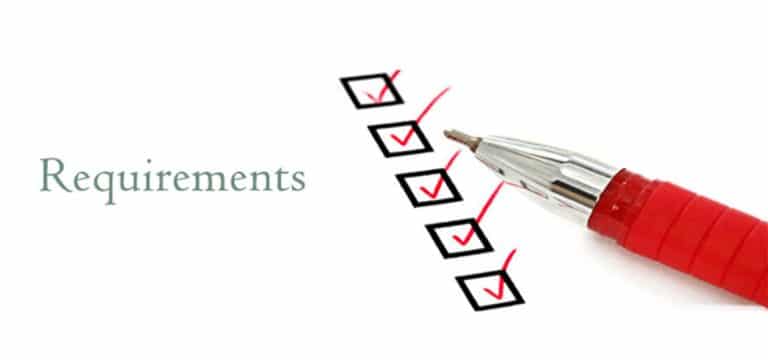ISO 9001 Certification Requirements
In this page, you will get a complete overview to learn the ISO 9001 Certification Requirements. Here we will assume that you are very familiar with the benefits of implementing an ISO Certification and that you understand Why ISO Certification is important.
- Step 1: Get an overview of the Clauses for Certification
- Step 2: Know the investment required for ISO Certification
- Step 3: Learn the process to get ISO 9001 Certified
- Step 4: The basics for choosing a Certification Body

Step 1: Overview of the 10 Clauses for Certification
Now, depending on whether you have someone within the company who is familiar with the standard, it might be the time to look at hiring an ISO 9001 consultant. An experienced management consultant will be able to guide you through the clauses of the standard, helping you to ensure that you interpret the requirement within the standard in a way that benefits your company.
Remember: the point of ISO certification is not to comply with the requirements of a standard, but to improve your business. The standard is divided into 10 sections, and the ISO 9001 clauses explained in plain English are as follows:
- Clauses 1-3 – very generic and nothing of much interest to business owners
- Clause 4 – giving an overview about your organisation
- Clause 5 – explaining the mindset that leaders must have, for successful improvement of their business
- Clause 6 – looking into factors that could positively or negatively affect your business
- Clause 7 – What resources do you need to run your business?
- Clause 8 – What are the key activities that add value to your customer. These are split in 4:
- Sales
- Purchasing
- Design & Development
- Operations
- Clause 9 – Measuring what’s important for your business to ensure success
- Clause 10 – Looking forward, and setting up a system for continual improvement beyond the first audit

Step 2: Get the budgets to cover the cost for ISO Certification
The first part of any important project within an organisation is to get the commitment of top management. It is important for the leaders of the company to buy into the idea of implementing ISO Management Systems within their business.
Like any other project, a budget will be required to achieve this prestigious certification. By looking at the cost to get ISO 9001 certification, you will be getting a very clear indication of the budget that will be required for your business. Possibly, the most 2 factors that determine the cost of your certification will be:
- The number of employees – working on a full-time or part-time basis with the company
- The number of sites – the offices through which the operation of the company is run
Step 3: Follow the process to get ISO 9001 Certified
Once you know how best to adapt each o the clauses of the standard, to the specific requirements of your business, you can start with the process to get ISO 9001 Certified. By clicking the aforementioned link, you will get more information about the process to get ISO certified, however here’s a summary:
- Do ISO Training for everyone within the company – communication is key, and therefore we must see to ensure that everyone in the company (from the lower-paid to the most influential person) are on-board with the idea to get ISO certified. A management system is about the management of processes, and leading people. Without the involvement of people, there can never be a successful implementation.
- Start looking at the clauses (as mentioned above) to do a gap analysis of the key and supporting processes within your business. The idea is to understand which clauses are already being tackled, and which areas need improvement. Moreover, we must evaluate which documented information, or procedures are required by the standard and make sure that such documents are duly made available.
- To ensure a successful implementation, you will need to run an internal audit. The idea of the audit is to get a qualified person, who is independent of the process being audited, to go through the process, and to ensure that all the actions mentioned within the procedures are followed, and to highlight any areas for possible improvement.
Step 4: Choosing a certification body
Once you are confident that your management system has been implemented to the highest standard, it would be time to seek the services of a certification body. The certification body is the official representative of ISO, who will be auditing your management system. The process for the certification body is as follows:
- Decide which certification body to work with (there are multiple certification bodies available with varying prices, quality and brand reputation)
- Request a quote by filling in the respective forms as required by the certification body
- Do Stage 1 audit – whereby the certification body will evaluate the documentation of your management system from the comfort of their office
- Do Stage 2 audit – whereby the auditor of the certification body will physically visit your offices, to audit your management system – just like you’d already done in the internal audit.
The above information represents the ISO 9001 Certification Requirements. If you have any further question, please read more about ISO Certification here, or feel free to contact me.
7 Comments
Comments are closed.